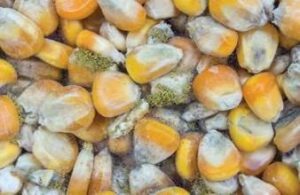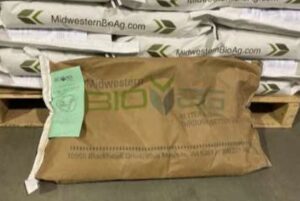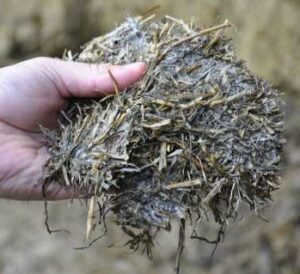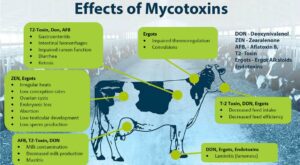Molds are fungi (fuzzy or dusty – appearing) that occur commonly in feedstuffs, including roughages and concentrates. Molds can infect dairy cattle causing a disease referred to as mycosis. Mycosis is most likely when cows may be immune-suppressed during stressful periods. A mycosis can occur in various locations such as lungs, mammary gland, uterus, or intestine. An intestinal infection may result in hemorrhagic bowel. Molds may also affect cattle by producing poisons called mycotoxins that affect animals when they consume contaminated feeds, resulting in a mycotoxicosis.
Mold growth and the production of mycotoxins are usually associated with extremes in weather conditions leading to plant stress or hydration of feedstuffs, insect damage, poor storage practices, low feedstuff quality, and inadequate feeding conditions. Since molds are present throughout the environment and, therefore, mycotoxins can be formed on crops in the field, during harvest or during storage, processing, or feeding. Management of crop production can reduce but not totally prevent the occurrence and concentrations of mycotoxins. Managing silage also plays a role in reducing the incidence of mycotoxins. Standard silage–making practices should be followed to include hybrid selection, reproduction of field and harvest stress, rapid filling of the silo, use of an effective silage additive, tight packing, covering, rapid feed-out, and discarding the spoilage.
Ruminants are more resistant to mycotoxin as they consume forages, by-product feeds, and wet feeds. They are exposed to a broader
PRODUCT OF THE WEEK: “O” Free Choice Buffer

- Contains calcium and magnesium sources with rumen buffering capabilities.
- Provides clay-based buffers such as montmorillonite and bentonite.
- Contains yeast culture to help stabilize the rumen fermentation
- Serves as a highly palatable free-choice



